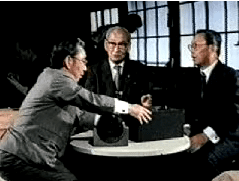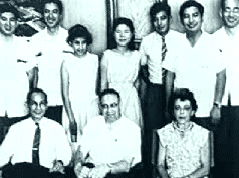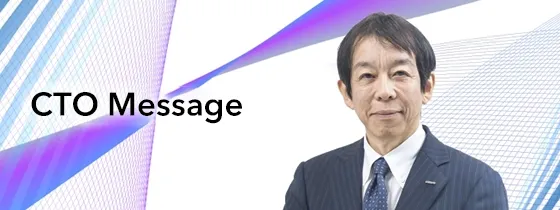Part 2: Initial Accomplishments and the Path to Automation
Development of the X-ray timer

Although his business was not making much money, Kazuma's faith in the electronics industry did not waver. In 1932, he met up with an old friend who was working as an X-ray salesman. This friend gave Kazuma the idea for his next invention: a timer for X-ray machines that combined an induction type relay with an oil circuit breaker.
Spotting a business opportunity, Kazuma relocated his factory to Higashinoda, Osaka, and began operations under the name Tateisi Electric Manufacturing Co. This modest enterprise would go on to become OMRON Corporation.

In 1935, Kazuma designed a brand mark for the new company and placed a full-page ad in the trade magazine OHM. At the time, this type of publicity was considered unusual, yet innovative. As orders for relays increased, the Higashinoda factory proved too small to handle production, and in 1936, Kazuma constructed a new factory in Nozato, expanding operations to Tokyo the following year.
World War II and the production of Japan's first micro switch

In 1941, prompted by a request from Tokyo University's Aeronautics Research Institute, engineers from Tateisi Electric began work on domestic production of the micro switch. They successfully produced the first such switch in Japan two years later, but the escalation of World War II prevented it from becoming a commercial success. Nevertheless, this commitment to research and development would eventually help the company become a pioneer in automation control technology.
As conditions in the Pacific worsened, Kazuma was forced to relocate his factory to Kyoto; after the war, the facility became Tateisi Electric's main factory. It was here the company introduced an adjustable heating device with its own stand, a hair iron for women, a desk-top electric lighter using micro switches and numerous other products.
To symbolize a new start, Kazuma renamed the company OMRON Tateisi Electronics and began full-scale operations in January 1950. Kazuma firmly believed that manufacturing and technological innovation were key to rebuilding a post-war Japan, and that know-how in these areas would lead the nation-and in turn, the company-down the road to economic growth. OMRON focused its energy on expanding sales channels for various newly developed products such as the micro switch relay, thermal switch and pressure switch.
Automation and the influence of US industrial practices

In 1952, several events would have a pivotal influence on OMRON's direction. These included a speech by Dr. Yoichi Ueno, a pioneer in the area of productivity improvement, in which he remarked that in the future, products must be designed with automation in mind; and Kazuma's introduction to the theory of cybernetics by Dr. Katsuzo Nishi, founder of the Nishi healing method. Eager to discover new markets, Kazuma saw automation and cybernetics as ways of tapping into the possibilities of the future.
In 1953, Kazuma made his first visit to the United States, where he was able to see American automation firsthand. On returning home, he embarked on a campaign of radical restructuring. Kazuma believed that once a fully-fledged corporate infrastructure was established, the company would grow on its own. To this end, he defined seven essential requirements that corporate management must meet. They were: 1) Establish a clear-cut management philosophy; 2) Follow human instincts; 3) Promote corporate growth through the creation of measures and goals that encourage personnel to act on their own volition; 4) Create a motivational workplace for employees; 5) Build a system to encourage participation by all employees; 6) Quickly assess and address societal needs; and 7) Consistently work on developing innovative technologies. Over the years that Kazuma managed the company, these seven points were to remain at the forefront of his mind and any action he took reflected these precepts.
HIGHLIGHT
Quotes from Kazuma 2: "If there is room to improve, then improve."
Regarding the first domestic efforts to develop the micro switch, Mr. Tateisi once said, "It's easy to dismiss things as 'bad'. However, this says nothing as to how they could be improved. If there's no way they can be improved, then creation has no future. At OMRON, we have built a culture of 'try it first' in which we try and find ways of improving things before writing them off altogether." This attitude is absolutely essential for those who would call themselves pioneers.

















